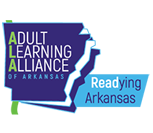Your student bursts into the classroom 5 minutes late and clearly bedraggled. He shares that they got chewed out by his boss at the end of the day, got to his car and realized he didn’t have enough gas to get to his lesson, and stopping to get gas in the pouring rain made him late. Of course, you are understanding, but you also realize that for this lesson to stick, you are going to need to get creative.
The best place to pour out that creativity: make the content relevant. Students of all ages need content that is relevant to their own lives, but this is especially important with adults. But that can be tricky for some topics. Today’s post will share some sources of relevant materials for your student.
Start With What You Have
If you are using a curriculum designed for adults, it likely uses appropriate and somewhat relevant text and practice activities. However, you may be able to take that a step further. For example, if the reading lesson is about banking vocabulary, bring in some brochures and blank forms from a couple of different local banks. Working on a math lesson with graphs and charts, use some data from the student’s life, such as days worked vs days off or ranking favorite foods.
Get Out
As you begin to get to know your student (don’t miss our posts and videos on building relationships), learn about places they go or would like to go around town. Plan for one lesson to meet at those places. Head to a local thrift store to work on comparing numbers or a local park to read the historical plaques. Not only does a new locale add novelty, it can help your student see the purpose in the work you are doing beyond passing the TABE or their specific goal.
Bring It In
Invite your students to bring items they want to be able to read or work through. Perhaps they have a book their child is reading at school or a manual for a task at work. Even a pamphlet or flier they come across can give you a way to connect skills you are teaching to everyday experiences.
Utility Value
Sometimes, there isn’t a great way to plan ahead or bring in an item from real life, but your student still asks (or at least thinks to themselves), “Why do I need this?” Whether they ask it aloud or not, it is a good idea to explain when they might use this content. When planning your lesson, be sure to have a few pre planned answers to utility value questions students ask. If all else fails, connect how knowing the content will lead to a future skill that does have utility or serve the student’s goals.
Use The Original
Prepared curriculum often uses examples or texts pulled from real life and simplified. For example, when studying American History for the citizenship exam, the workbook might give a synopsis of the writing of the declaration of independence. While your student may not be able to read the original document, take a moment to show them. Let students see that the things they are learning about weren’t simply made up for the sake of a workbook.
A Caution
There are a lot of great sources of relevant content, but be sure you are evaluating it all for credibility. Unfortunately, a lot of spoof documents or false and misleading information is out there.







